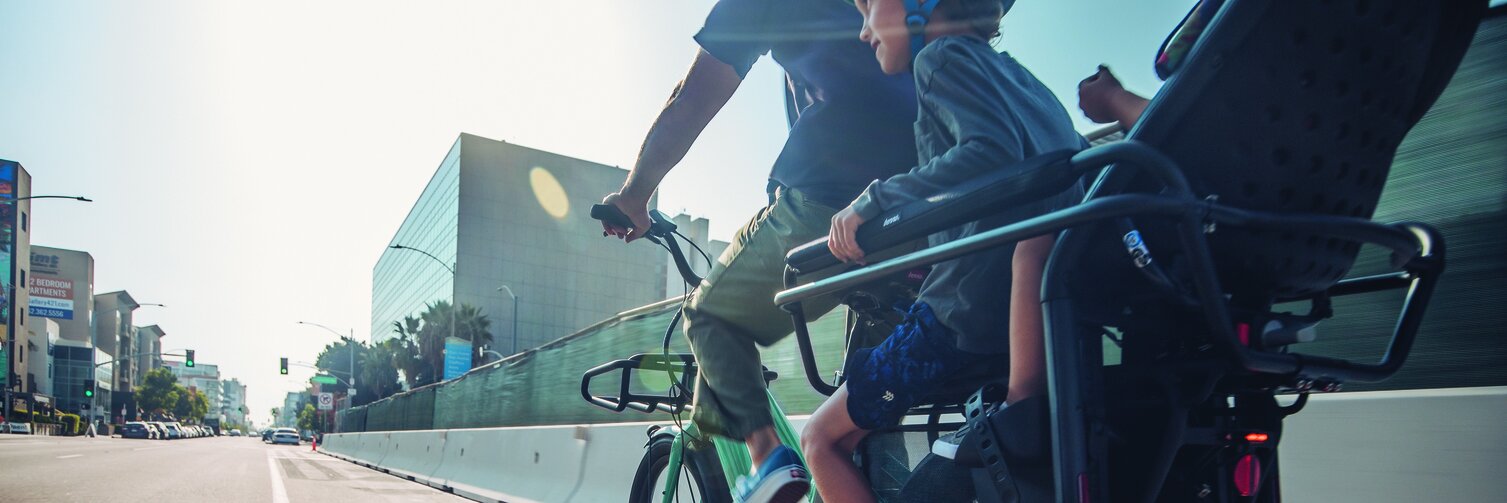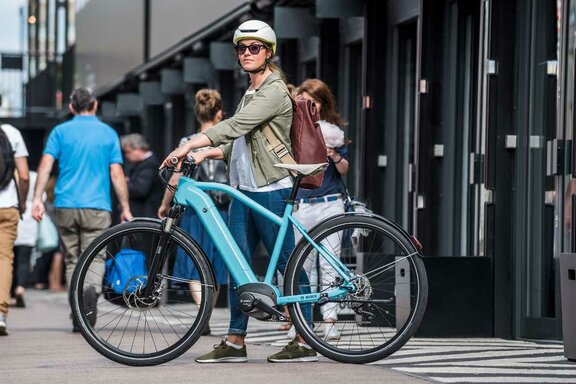Why more states need to
Adopt the Three-Class eBike system

Electric bikes (eBikes) are gaining traction as a means of transportation in the United States after enjoying years of popularity in Europe. Anyone can ride them, from the most seasoned bike rider to someone who hasn’t biked since childhood. EBikes have the potential to expand bike riding to new audiences and keep people riding bikes throughout their lives.
But some confusion around how and where electric bikes can be ridden is dampening their growth potential and as an emerging technology, they require clear regulations to govern their use and create stability in the marketplace.

Lack of Regulation
In the United States, at the federal level, the U.S. Consumer Product Safety Commission regulates eBikes for the purpose of product safety for manufacturing and first sale. States decide how eBikes can be used on streets and bike paths. Over time, without clear guidance, states adopted outdated rules governing the use of eBikes — some treating them like human-powered bicycles, some treating them like motor vehicles, and everything in between. Some have no regulation whatsoever.
Taking Steps toward Clarity
Since 2014, with leadership team from PeopleForBikes, the national bicycle advocacy group and bicycle industry trade association, more than 30 states have passed a standardized regulation for eBike use with a simple, straightforward approach known as the “3-Class” System. This model legislation defines three common classes of eBikes (based on speed, wattage, and operation), and allows states to decide which types of bicycle infrastructure each class can use (typically Class 1 and Class 2 eBikes are allowed wherever traditional bikes are allowed). It also requires eBike makers to place a highly visible sticker on the frame to indicate an eBike’s Class.
In 2015, California was the first state to adopt this “3-Class” approach, and since then, 32 other states followed suit: Alabama, Arizona, Arkansas, Colorado, Connecticut, Florida, Georgia, Idaho, Illinois, Indiana, Iowa, Louisiana, Maine, Maryland, Michigan, Mississippi, New Hampshire, New Jersey, New York, North Dakota, Ohio, Oklahoma, South Dakota, Tennessee, Texas, Utah, Virginia, Vermont, Washington, West Virginia, Wisconsin, and Wyoming. More states around the country should adopt this “3-Class” standard to eliminate confusion, enhance safety, and promote this green transportation method.
The three classes are defined as follows:
- Class 1: eBikes that are pedal-assist only, with no throttle, and have a maximum assisted speed of 20 mph.
- Class 2: eBikes that also have a maximum speed of 20 mph, but are throttle-assisted.
- Class 3: eBikes that are pedal-assist only, with no throttle, and a maximum assisted speed of 28 mph.
All classes limit the motor’s power to 1 horsepower (750W).
Classes and Access
Some states treat Class 1 eBikes like traditional mountain or pavement bicycles, legally allowed to ride where bicycles are permitted, including bike lanes, roads, multiuse trails and bike-only paths. New York City’s Mayor de Blasio recently announced the city will officially allow Class 1 eBikes. While New York City’s decision is unrelated to singletrack trail use for electric mountain bikes (eMTBs), we believe that Class 1 pedal-assist eBikes should have the same rights and responsibilities as traditional bikes and therefore also be allowed on non-motorized mountain bike trails, as is the case in Europe.

Class 2 throttle-assist eBikes are often allowed most places a traditional bicycle can go, though some states and cities are opting for additional restrictions (e.g. New York City & Michigan State). Class 2 may not be suitable for singletrack mountainbike trails — it has been shown that they pose greater physical damage to trails due to the throttle-actuation. Class 2 may be better suited for multi-use OHV trails designed for more rugged off-road vehicles.
Class 3 eBikes are typically allowed on roads and on-road bike lanes (“curb to curb” infrastructure), but restricted from bike trails and multiuse paths. While a 20-mph maximum speed is achievable on a traditional bicycle, decision makers and agencies consider the greater top-assisted speed of a Class 3 eBike too fast for most bike paths and trails that are often shared with other trail users.
Bosch only makes Class 1 and Class 3 eBike systems, which to be clear, are both pedal assist and provide support up to 20mph and 28mph respectively. Learn more about Bosch eBike systems here.

Everyone stands to benefit from common-sense rules on how and where to ride an eBike. With clear regulation and updated state laws, law enforcement will understand what rights eBike users have and when to enforce the law, and can easily identify the class of bike based on its sticker. Bike retailers can help their customers understand where each type of eBike can be used, boosting their sales. People who already ride eBikes will have easy rules to follow on where they can ride, and new bicyclists who may be discouraged from riding a traditional bicycle due to limited physical fitness, age, disability or convenience gain new transportation alternatives. To learn more about where electric bikes can be ridden in the United States visit People for Bikes.
Written by Claudia Wasko, General Manager of Bosch eBikes Systems. Claudia can be reached at Claudia.Wasko3@us.bosch.com.